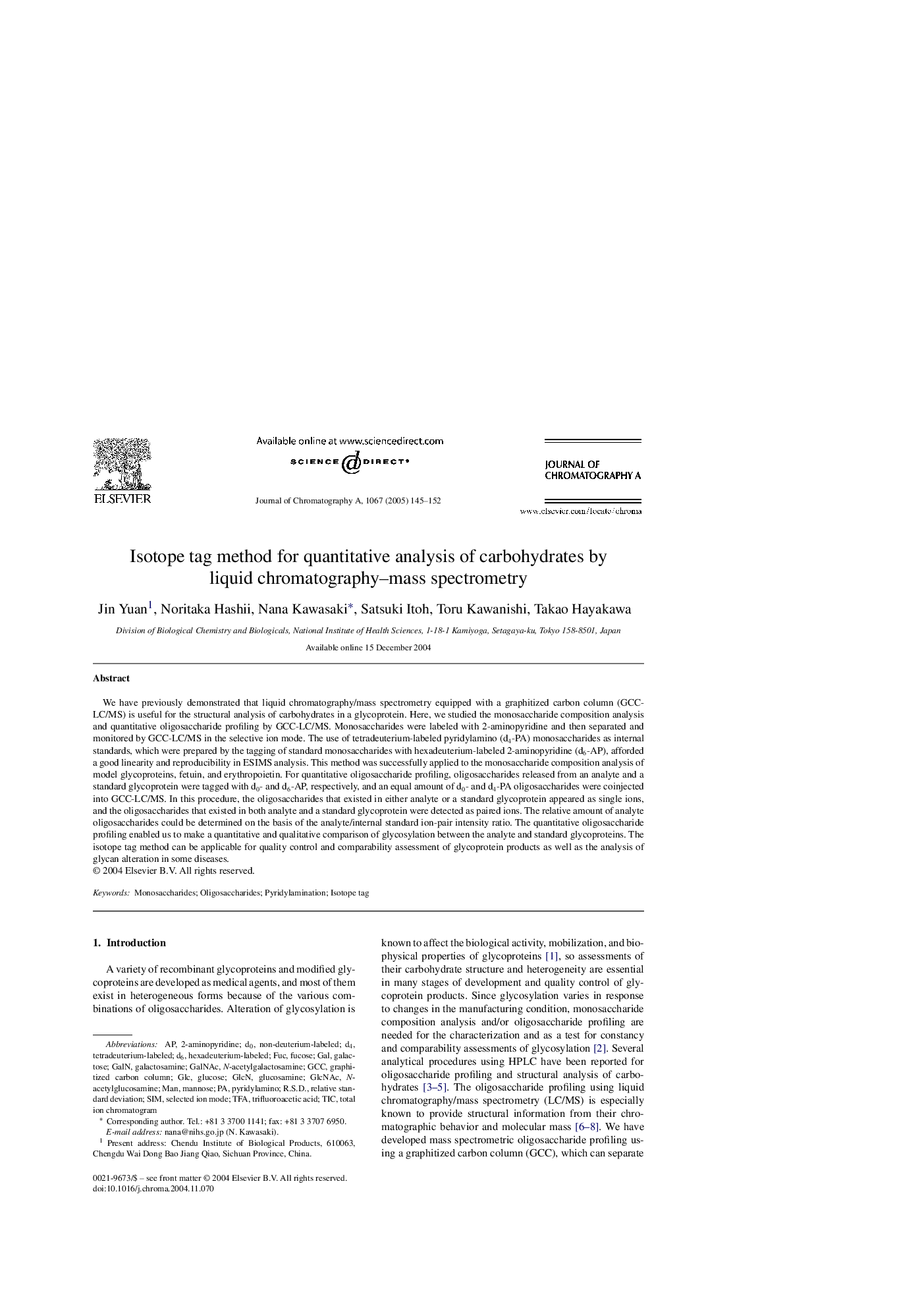| Article ID | Journal | Published Year | Pages | File Type |
|---|---|---|---|---|
| 9749256 | Journal of Chromatography A | 2005 | 8 Pages |
Abstract
We have previously demonstrated that liquid chromatography/mass spectrometry equipped with a graphitized carbon column (GCC-LC/MS) is useful for the structural analysis of carbohydrates in a glycoprotein. Here, we studied the monosaccharide composition analysis and quantitative oligosaccharide profiling by GCC-LC/MS. Monosaccharides were labeled with 2-aminopyridine and then separated and monitored by GCC-LC/MS in the selective ion mode. The use of tetradeuterium-labeled pyridylamino (d4-PA) monosaccharides as internal standards, which were prepared by the tagging of standard monosaccharides with hexadeuterium-labeled 2-aminopyridine (d6-AP), afforded a good linearity and reproducibility in ESIMS analysis. This method was successfully applied to the monosaccharide composition analysis of model glycoproteins, fetuin, and erythropoietin. For quantitative oligosaccharide profiling, oligosaccharides released from an analyte and a standard glycoprotein were tagged with d0- and d6-AP, respectively, and an equal amount of d0- and d4-PA oligosaccharides were coinjected into GCC-LC/MS. In this procedure, the oligosaccharides that existed in either analyte or a standard glycoprotein appeared as single ions, and the oligosaccharides that existed in both analyte and a standard glycoprotein were detected as paired ions. The relative amount of analyte oligosaccharides could be determined on the basis of the analyte/internal standard ion-pair intensity ratio. The quantitative oligosaccharide profiling enabled us to make a quantitative and qualitative comparison of glycosylation between the analyte and standard glycoproteins. The isotope tag method can be applicable for quality control and comparability assessment of glycoprotein products as well as the analysis of glycan alteration in some diseases.
Keywords
TICR.S.D.Graphitized carbon columnGlcNN-acetylgalactosamineGalNAcGalNGCCTFAGlcNAcGlcFucoseFuc2-AminopyridineTrifluoroacetic acidOligosaccharidesrelative standard deviationSIMMannoseManMonosaccharidesN-acetylglucosaminePyridylaminationpyridylaminototal ion chromatogramGalGalactosamineGalactoseGlucoseglucosamine
Related Topics
Physical Sciences and Engineering
Chemistry
Analytical Chemistry
Authors
Jin Yuan, Noritaka Hashii, Nana Kawasaki, Satsuki Itoh, Toru Kawanishi, Takao Hayakawa,
